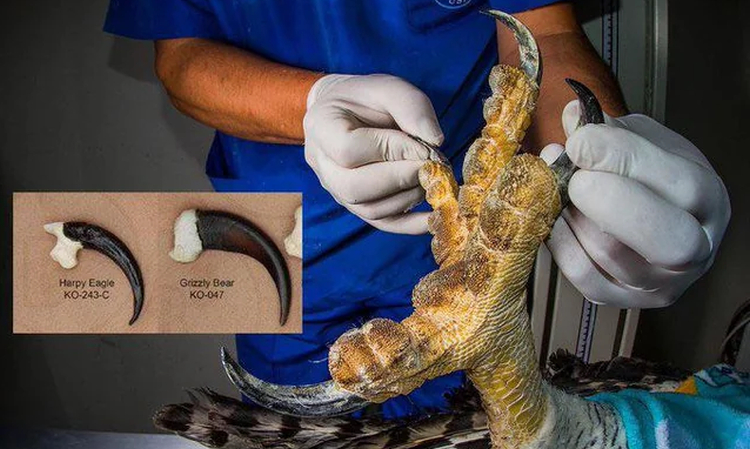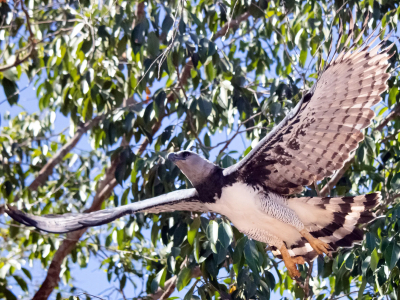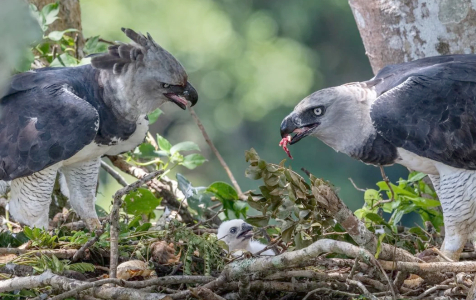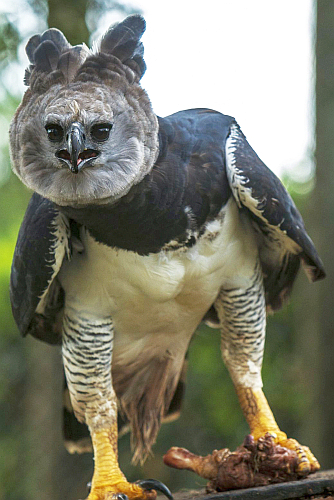 In the tropical rainforests of Mexico, Central, and South America, there is an eagle of amazing proportions. Its legs are the size of a man's arms, and it has claws the size of grizzly bear paws. Its rear talons are about 10 centimetres long! With a wingspan of up to 2.3 meters, the Harpy is one of the world's largest eagles, with an estimated lifespan of 25 to 35 years in the wild.
  
 Harpy eagles form breeding pairs that last for life. The pair builds a nest together in a large tall tree, high above the forest floor, consisting of woven sticks lined with soft vegetation and animal fur. These impressive nests are reused by the pair every year.
Harpy eagles form breeding pairs that last for life. The pair builds a nest together in a large tall tree, high above the forest floor, consisting of woven sticks lined with soft vegetation and animal fur. These impressive nests are reused by the pair every year. The female lays two eggs, but will raise only one chick, focusing energy on the first chick to hatch and ignoring the second one. Both parents tend the chick for 10 months; the parents won't breed again for 2-3 years.  Harpy eagles can potentially perch for up to 23 hours in search of prey. They are incredibly skilled in flight and are adept at maneuvering through the dense forest habitat. They are diurnal and hunt during the day.
Harpy eagles can potentially perch for up to 23 hours in search of prey. They are incredibly skilled in flight and are adept at maneuvering through the dense forest habitat. They are diurnal and hunt during the day. Harpy eagles use their long talons and powerful legs to subdue prey. They can easily snatch prey from the canopy and are powerful enough fliers to carry their prey away to a perch to feed. Like most predators, they help to keep the prey populations in check. |
